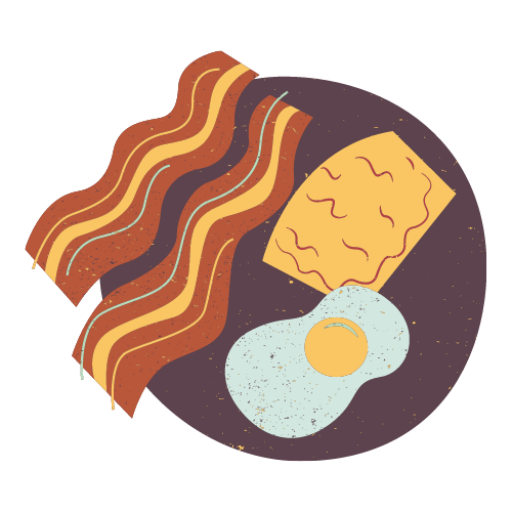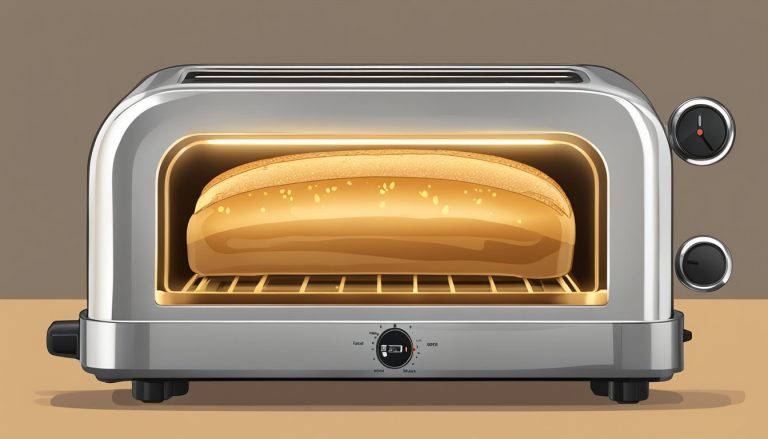Fast food breakfast menus have seen their fair share of hits and misses over the years. Jack in the Box, known for its all-day breakfast offerings, has experimented with various morning items to satisfy customer cravings. While some creations have stood the test of time, others have quietly disappeared from the menu.
Jack in the Box typically serves breakfast 24 hours a day, 7 days a week, giving customers ample opportunity to try their morning offerings. Popular items like the Sausage Croissant and Supreme Croissant have become staples for early risers and late-night diners alike. However, not every breakfast item introduced by the chain has achieved the same level of success.
This blog post explores some of Jack’s breakfast menu items that didn’t quite make the cut. From ambitious sandwich creations to unique twists on classic morning fare, we’ll examine why these items failed to resonate with customers and ultimately vanished from the menu. Understanding these breakfast mishaps provides insight into the ever-evolving world of fast food breakfast options.
The Rise of Breakfast in Fast Food

Fast food breakfast emerged as a game-changing innovation in the industry, reshaping morning dining habits and sparking fierce competition among major chains. This shift revolutionized how Americans start their day.
Evolution of Fast Food Breakfast
Jack in the Box pioneered fast food breakfast in the early 1970s, introducing the first breakfast sandwich to its menu. This bold move set off a chain reaction across the industry. McDonald’s followed suit in 1972 with the Egg McMuffin, while other chains quickly developed their own morning offerings.
By the mid-1970s, breakfast had become a staple at many fast food restaurants. Jack in the Box expanded its breakfast menu to include omelets in 1976. The convenience and affordability of these quick morning meals resonated with busy consumers.
Fast food breakfast menus evolved rapidly, incorporating a variety of options beyond simple sandwiches. Chains introduced breakfast platters, burritos, and even healthier alternatives to cater to changing tastes and dietary preferences.
Comparing Major Chains
McDonald’s dominated the fast food breakfast market with its Egg McMuffin and subsequent additions like hotcakes and sausage biscuits. Burger King countered with its Croissan’wich in 1983, offering a unique twist on the breakfast sandwich.
Starbucks entered the breakfast arena in the 1990s, focusing on coffee-centric morning fare. Their pastries and breakfast sandwiches became popular complements to their signature beverages.
Dunkin’ (formerly Dunkin’ Donuts) transformed from a donut shop into a breakfast destination. They expanded their menu to include savory options like the Big ‘n Toasted sandwich, though some items were later discontinued.
| Chain | Signature Breakfast Item |
|---|---|
| McDonald’s | Egg McMuffin |
| Burger King | Croissan’wich |
| Starbucks | Breakfast sandwiches |
| Dunkin’ | Big ‘n Toasted (discontinued) |
Breakfast and Fast Food Culture
The introduction of breakfast menus significantly impacted fast food culture. Morning commuters now had quick, affordable options beyond traditional sit-down restaurants or home-cooked meals.
All-day breakfast became a differentiator for some chains. Jack in the Box notably offered its breakfast items around the clock, setting it apart from competitors with limited breakfast hours.
Fast food breakfast also influenced workplace culture, with many professionals relying on these quick options to fuel their mornings. The convenience factor played a crucial role in cementing breakfast as a key part of fast food offerings.
Health concerns eventually led to menu adaptations, with chains introducing lighter options and using fresher ingredients to appeal to more health-conscious consumers.
Jack’s Breakfast Creations

Jack in the Box has introduced numerous breakfast items over the years, ranging from classic staples to innovative offerings. The chain’s menu evolution reflects changing customer preferences and culinary trends in the fast food breakfast landscape.
From Traditional to Innovative
Jack in the Box’s breakfast menu started with simple options like the Breakfast Jack, a ham, egg, and cheese sandwich on a bun. As tastes evolved, so did their offerings. The chain introduced breakfast burritos, combining eggs, cheese, and meats in a portable format.
In recent years, Jack in the Box has experimented with more unique items. The Breakfast Waffle Sandwich featured eggs and meat between two waffles, catering to those seeking sweet and savory combinations. Loaded Tiny Tacos, while not strictly breakfast, became a popular morning option for some customers.
Customer Favorites and Trends
Customer preferences have shaped Jack in the Box’s breakfast menu. The classic Breakfast Jack remains a staple due to its simplicity and affordability. Breakfast burritos gained popularity for their convenience and customization options.
Health-conscious consumers prompted the addition of lighter options, including egg white sandwiches and protein-packed bowls. Jack in the Box also responded to the all-day breakfast trend, making select morning items available throughout the day.
Nutrition became a focus, with the chain providing detailed nutritional information for its breakfast offerings. This transparency allowed customers to make informed choices about their morning meals.
Nutritional Considerations

Jack’s breakfast menu aims to balance taste with nutrition. While some items provide essential nutrients, others may be higher in calories and less nutritionally dense.
Balancing Calories and Satisfaction
Jack’s breakfast options vary widely in calorie content. Lower-calorie choices like the Bacon Breakfast Jack contain around 350 calories. This sandwich offers a satisfying meal without excessive energy intake. In contrast, some platters reach up to 1,070 calories, accounting for a significant portion of daily calorie needs.
Customers seeking lighter fare can opt for items under 500 calories. These choices help manage weight while still providing a filling breakfast. Jack’s also offers customization options, allowing diners to adjust portions or ingredients to better fit their calorie goals.
Protein-Packed Options
Many Jack’s breakfast items deliver substantial protein content. Egg-based sandwiches and wraps typically provide 15 to 40 grams of protein per serving. This nutrient is crucial for muscle maintenance, satiety, and overall health.
The Chicken Fajita Pita stands out with its balanced nutritional profile. It offers a good protein source while keeping calories in check at 330. For those seeking higher protein, options with multiple eggs or meat servings can exceed 20 grams per item.
Protein-rich breakfasts can help maintain stable blood sugar levels and reduce mid-morning cravings.
Addressing Fat and Sodium Content
Jack’s breakfast menu includes items with varying fat and sodium levels. Some choices contain up to 44 grams of fat, with saturated fat reaching 14 grams. High-fat options may contribute to increased calorie intake and potential health concerns if consumed regularly.
Sodium content is another consideration. Certain breakfast items contain over 1,500 mg of sodium, more than half the recommended daily limit. Excess sodium intake can contribute to high blood pressure and other health issues.
Customers can make informed choices by reviewing nutritional information. Opting for items lower in saturated fat and sodium can help maintain a balanced diet. Jack’s offers some healthier alternatives with reduced fat and sodium content for health-conscious diners.
Menu Items That Missed the Mark

Jack’s breakfast menu has seen its share of creative attempts and flops. Some items failed to resonate with customers despite innovative concepts, while others struggled to balance taste and convenience.
Unique Takes on Breakfast Classics
Jack experimented with a Pancake Breakfast Sandwich, featuring two small pancakes as the “bun.” It included eggs, cheese, and sausage, drizzled with syrup. While intriguing, customers found it messy and impractical for on-the-go eating.
The Breakfast Burrito Bowl aimed to deconstructed the popular handheld item. It layered scrambled eggs, hash browns, bacon, and cheese in a bowl. Despite its appeal to fork-and-knife diners, it didn’t catch on with the drive-thru crowd.
A French Toast Stick Sandwich used three French toast sticks as the base. Filled with egg and bacon, it was topped with powdered sugar. The sweet-savory combo proved too polarizing for widespread adoption.
The Quest for the Perfect Breakfast Sandwich
Jack’s Mega Muffin sandwich packed two eggs, double cheese, and triple bacon on an English muffin. While satisfying for big appetites, its high calorie count deterred health-conscious customers.
The Croissanwich attempted to elevate the standard breakfast sandwich with a buttery croissant. However, the delicate pastry often arrived soggy or crushed in drive-thru orders.
A Breakfast Slider trio offered variety with egg and cheese on mini buns. Options included bacon, sausage, or ham. The small size appealed to some, but others found them unsatisfying as a full meal.
When Experimentation Doesn’t Pan Out
The Breakfast Pizza featured a crispy hash brown crust topped with scrambled eggs, bacon, and cheese. While creative, it proved difficult to eat on the go and didn’t align with customer expectations of breakfast fare.
Jack’s attempt at breakfast tacos fell flat. Flour tortillas filled with eggs, cheese, and choice of meat failed to stand out in a crowded market of similar offerings from competitors.
A Greek Yogurt Parfait aimed to attract health-conscious customers. Layered with granola and mixed berries, it struggled to compete with more indulgent menu items and was eventually discontinued.
Beverages Beyond Coffee

Jack’s breakfast beverage options extend beyond traditional coffee. While coffee remains popular, the chain has explored other morning drink choices to cater to diverse customer preferences.
Tea: An Underexplored Breakfast Companion
Tea has not been a primary focus on Jack’s breakfast menu. The chain offers basic hot tea options, but lacks a diverse selection of tea varieties. Black tea is typically available, but green, herbal, or specialty teas are often absent. This limited tea selection may be a missed opportunity to attract tea enthusiasts seeking alternatives to coffee.
Jack’s could potentially expand its tea offerings to include popular breakfast blends like English Breakfast or Earl Grey. Iced tea options, while available later in the day, are not prominently featured during breakfast hours.
Jack’s Approach to Morning Beverages
Jack’s morning beverage strategy centers primarily on coffee and soft drinks. The chain offers hot coffee, iced coffee, and occasionally specialty coffee drinks like lattes or cappuccinos. Soft drinks are available throughout the day, including breakfast hours.
Milk and juice options are typically limited to small cartons or bottles. Jack’s has not significantly invested in creating unique breakfast smoothies or fruit-based drinks. This focus on traditional beverages may appeal to customers seeking familiar options but could limit the chain’s ability to attract health-conscious consumers or those looking for more diverse morning drink choices.
The Unseen Side of Breakfast Items

Fast food breakfast menus often hide unexpected truths behind their familiar offerings. Comfort classics and healthier options alike present challenges in their creation and reception.
Reimagining Comfort Foods
Jack in the Box pioneered all-day breakfast, serving up traditional comfort foods around the clock. Their menu features staples like pancakes, hash browns, and egg sandwiches. However, these familiar items face fierce competition in a crowded market.
To stand out, chains must innovate while maintaining the essence of breakfast comfort. This balancing act proves tricky. New twists on classics risk alienating loyal customers. Yet failing to evolve can lead to menu stagnation.
Some attempts to reimagine comfort foods fall flat. Discontinued items like certain breakfast sandwiches reveal the challenges of innovation. Chains must carefully consider portion sizes, ingredient combinations, and flavor profiles to create successful new comfort offerings.
Exploring Healthier Alternatives
Fast food chains increasingly recognize demand for nutritious breakfast options. Oatmeal and yogurt parfaits have become common menu additions. These items aim to provide lighter choices alongside traditional fare.
Developing healthier alternatives presents unique hurdles. Taste and texture must satisfy customer expectations. Preparation methods need to fit existing kitchen workflows. Nutritional profiles must offer meaningful benefits.
Some chains struggle to find the right balance. Failed health-focused items often miss the mark on flavor or convenience. Successful options typically blend familiar elements with nutritious ingredients. Protein-packed egg white sandwiches and fruit-topped oatmeal bowls exemplify this approach.
Chains continue to refine their healthier breakfast offerings. Consumer preferences and nutritional research shape these evolving menu sections. The most successful items deliver both satisfaction and improved nutritional value.
The Fast Food Breakfast Experience

Fast food breakfast has become a staple for many Americans seeking a quick morning meal. The convenience and variety of options have made it a popular choice for busy individuals on the go.
The Allure of Speed and Convenience
Fast food chains offer breakfast menus designed for rapid service. Drive-thru windows allow customers to order and receive their meals without leaving their vehicles. Inside, efficient assembly lines ensure swift food preparation. Popular items like egg sandwiches, breakfast burritos, and coffee are readily available within minutes of ordering.
Many chains serve breakfast all day, catering to different schedules and cravings. This flexibility appeals to shift workers, late risers, and those who enjoy breakfast foods at any hour. The affordability of fast food breakfast also attracts budget-conscious consumers looking for a filling meal at a low price point.
Enhancing the Dining Experience
Fast food restaurants have evolved to improve the breakfast experience. Many now offer premium coffee options, including espresso-based drinks and flavored brews. Some chains have introduced healthier choices like oatmeal, yogurt parfaits, and fruit cups to cater to health-conscious customers.
Digital ordering systems and mobile apps have streamlined the process further. Customers can customize their orders, save favorites, and earn rewards. Some locations feature updated interiors with comfortable seating and free Wi-Fi, encouraging patrons to linger and enjoy their meals.
Seasonal promotions and limited-time offers keep breakfast menus exciting. New items are regularly introduced to spark interest and compete with other chains. This constant innovation ensures that the fast food breakfast landscape remains dynamic and responsive to consumer preferences.
Innovations That Shaped the Menu

Jack in the Box has consistently pushed boundaries with its menu offerings, introducing novel items and adapting to changing consumer tastes. The chain’s willingness to experiment has led to both hits and misses over the years.
Beyond Burgers: Jack’s Diverse Choices
Jack in the Box expanded far beyond its burger roots to offer a wide array of options. The chain introduced chicken sandwiches and chicken nuggets, catering to those seeking alternatives to beef.
Breakfast became a key focus, with items like the Meat Lovers Breakfast Burrito and Extreme Sausage Sandwich appealing to hearty appetites. The Brunch Burger blurred lines between meal times, featuring a beef patty topped with a fried egg and hash brown.
These diverse choices allowed Jack in the Box to compete across different dayparts and attract a broader customer base.
Limited-Time Offers and Seasonal Variations
Jack in the Box frequently rotates new items onto its menu as limited-time offers. This strategy keeps the menu fresh and generates excitement among customers.
Seasonal variations, like holiday-themed shakes or summer-inspired sandwiches, provide timely options throughout the year. These temporary additions often test customer response to potential permanent menu items.
Limited-time offers also create a sense of urgency, encouraging repeat visits from customers eager to try new creations before they disappear. This approach has helped Jack in the Box maintain relevance in a competitive fast-food landscape.
Concluding Thoughts on Breakfast Failures
Fast food chains frequently experiment with new breakfast items to attract customers and boost sales. Some innovations succeed, while others fall flat and disappear from menus.
Failed breakfast items often result from misaligned consumer preferences or operational challenges. Chains must balance novelty with familiarity to appeal to their target audience.
Timing and marketing play crucial roles in a breakfast item’s success. Even promising products can falter if launched during unfavorable market conditions or without adequate promotion.
Discontinued items sometimes make comebacks due to customer demand or nostalgia. Chains may reintroduce popular discontinued items as limited-time offers to generate excitement.
Learning from breakfast failures helps restaurants refine their menus and strategies. Unsuccessful items provide valuable insights into customer preferences and operational efficiency.
Ultimately, the fast food breakfast landscape continues to evolve. Chains must stay adaptable and responsive to changing tastes to maintain their competitive edge in the morning meal market.




